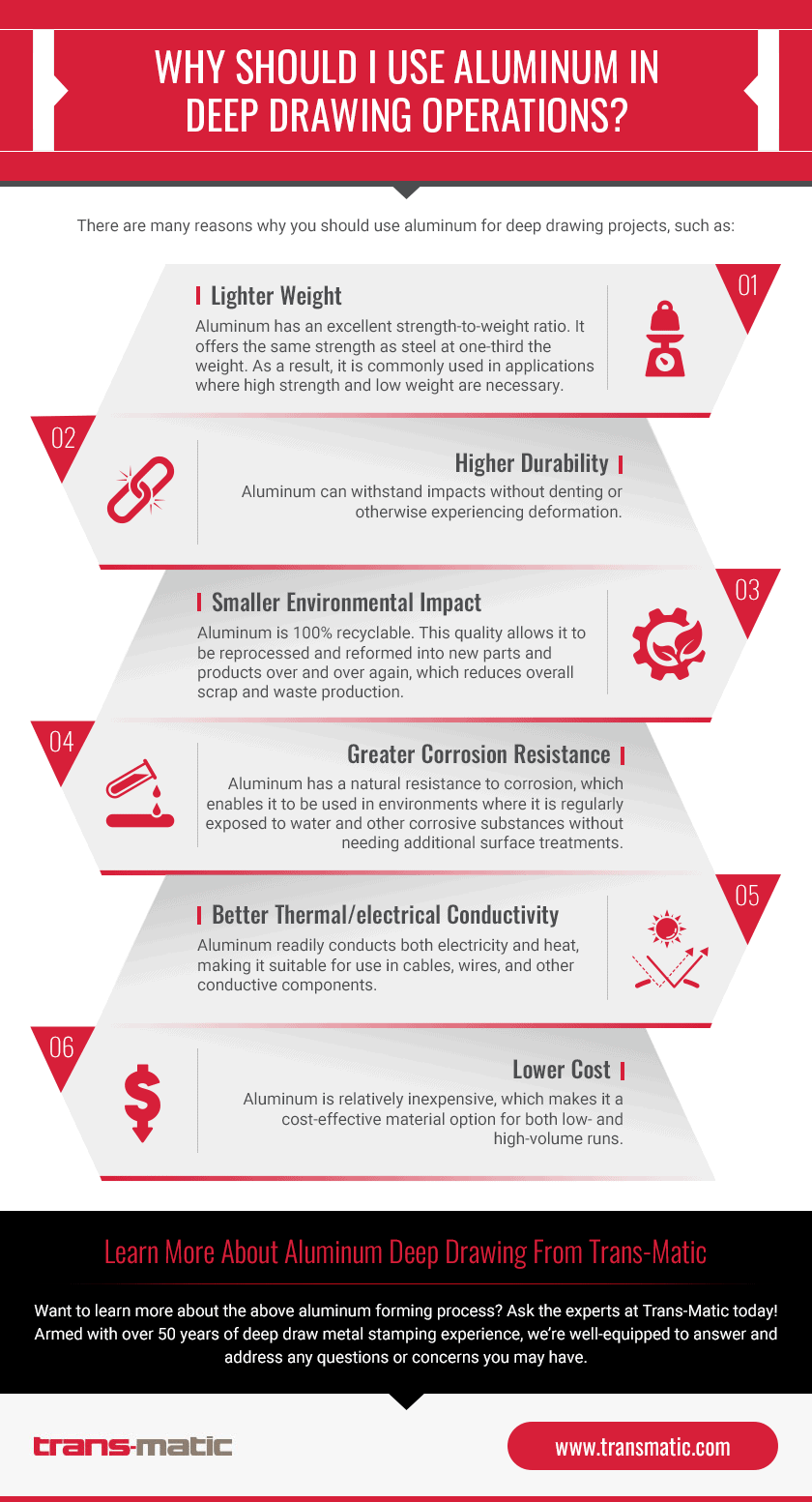Aluminum is a highly versatile metal that can be used in a number of manufacturing processes. For example, it can be deep drawn to form components with heights/depths that equal or exceed their widths. The resulting parts and products are both strong and lightweight.
The following article provides an overview of the aluminum deep drawing process. It discusses why you should use aluminum for deep drawing operations and how the material is formed during deep drawing operations.
Why Should I Use Aluminum in Deep Drawing Operations?
There are many reasons why you should use aluminum for deep drawing projects, such as:
- Lighter weight. Aluminum has an excellent strength-to-weight ratio. It offers the same strength as steel at one-third the weight. As a result, it is commonly used in applications where high strength and low weight are necessary.
- Higher durability. Aluminum can withstand impacts without denting or otherwise experiencing deformation.
- Smaller environmental impact. Aluminum is 100% recyclable. This quality allows it to be reprocessed and reformed into new parts and products over and over again, which reduces overall scrap and waste production.
- Greater corrosion resistance. Aluminum has a natural resistance to corrosion, which enables it to be used in environments where it is regularly exposed to water and other corrosive substances without needing additional surface treatments.
- Better thermal/electrical conductivity. Aluminum readily conducts both electricity and heat, making it suitable for use in cables, wires, and other conductive components.
- Lower cost. Aluminum is relatively inexpensive, which makes it a cost-effective material option for both low- and high-volume runs.
How Do I Form Deep Drawn Aluminum Parts?
Since aluminum is highly inelastic, it must be evenly and carefully compressed and stretched during deep drawing operations to form quality components. While the aluminum deep drawing process can vary slightly from project to project, it typically includes the following steps:
- The aluminum is drawn into the die cavity of the stamping machine. The depth of the die cavity should equal or exceed the minimum width of the desired component. Additionally, since the material inherently resists flow, the machine operator must ensure the appropriate draw ratio is maintained, the right lubricant is used, and the proper blank holder force is applied. Otherwise, it will not flow enough and/or stretch too much.
- The material is formed using radial tension/tangential compression. The machine employs radial tension and tangential compression to form the material into the desired shape.
- The first two steps are repeated until the proper shape and size are achieved. Deep drawing operations often involve a series of dies, each of which gradually decreases the diameter and increases the height/depth of the component without significantly affecting the thickness of the wall.
Ultimately, the deep drawing process turns flat sheets of aluminum (known as blanks) into hollow cylindrical or rectangular components. These parts and products can have straight or tapered sides.

Learn More About Aluminum Deep Drawing From Trans-Matic
Want to learn more about the above aluminum forming process? Ask the experts at Trans-Matic today! Armed with over 50 years of deep draw metal stamping experience, we’re well-equipped to answer and address any questions or concerns you may have.